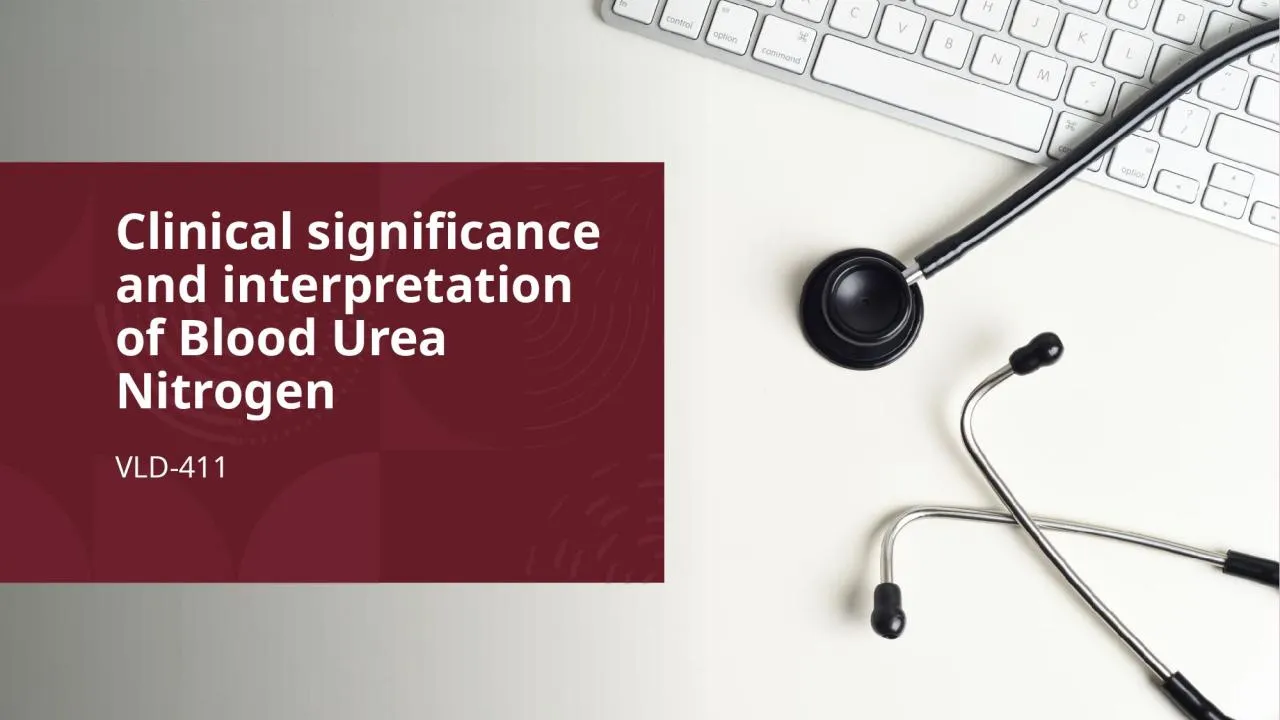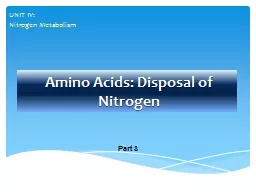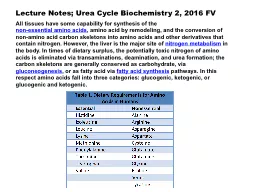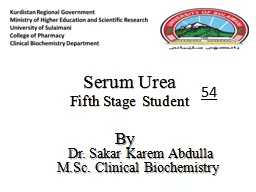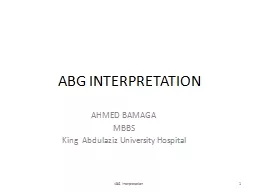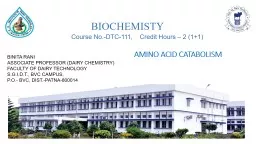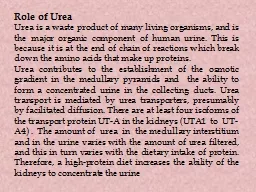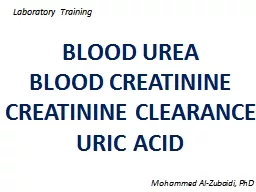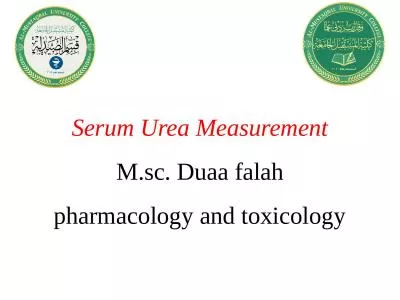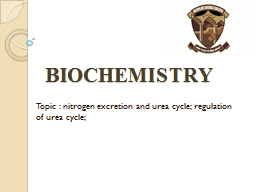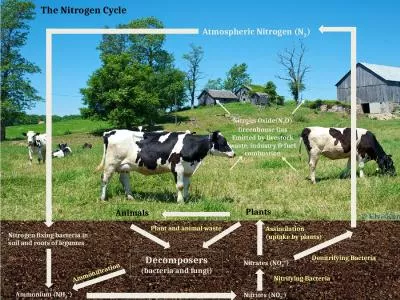PPT-Clinical significance and interpretation of Blood Urea Nitrogen
Author : brown | Published Date : 2022-06-01
VLD411 Urea or Blood Urea Nitrogen Urea is the major excretory product of protein metabolism formed in the liver from amino groups NH2 and free ammonia generated
Presentation Embed Code
Download Presentation
Download Presentation The PPT/PDF document "Clinical significance and interpretation..." is the property of its rightful owner. Permission is granted to download and print the materials on this website for personal, non-commercial use only, and to display it on your personal computer provided you do not modify the materials and that you retain all copyright notices contained in the materials. By downloading content from our website, you accept the terms of this agreement.
Clinical significance and interpretation of Blood Urea Nitrogen: Transcript
VLD411 Urea or Blood Urea Nitrogen Urea is the major excretory product of protein metabolism formed in the liver from amino groups NH2 and free ammonia generated during protein catabolism Enzymatically catalyzed process is termed the urea cycle. Protein . Nitrogen (NPN) . Concentration. 224 PHL. Lab#5 . Non-protein nitrogen (NPN). NPN includes . the nitrogen from all nitrogenous substances . other than proteins. .. . The NPN could be measured as a . UNIT IV:. Nitrogen Metabolism. Part . 3. C. Transport of ammonia to the liver. Two mechanisms are available in humans for the transport of ammonia from the peripheral tissues to the liver for its ultimate conversion to urea. . 2016 FV. All tissues have some capability for synthesis of the . non-essential amino acids. , amino acid by remodeling, and the conversion of non-amino acid carbon skeletons into amino acids and other derivatives that contain nitrogen. However, the liver is the major site of . Rana. . Pratap. Singh, Ph.D.. Professor, DES; Dean SMS. Professor- in- Charge, Academic. BBA University (A Central University), . Lucknow. www.ranapratap.in. Food and Environment. We talk about food production . Brian . Arnall. Department . of Plant and Soil Sciences. Oklahoma State University. Isn’t it . true……... Nitrogen. Not . available . NH3 is the devil. Phosphorus. Not available . Around for a long . sulfur and nitrogen. Sulfates. in ethanol. Mike A. Smith. Group Leader, Technical Service, Biofuel. Oxygen. Burning. Sulfur dioxide . ↔ . Bisulfite. ↔ . Sulfuric Acid . SO. 2. . . . H. 2. O. By. Dr. Sakar Karem Abdulla. M.Sc. Clinical Biochemistry. 54. Urea. Urea is the end product of protein metabolism produced mainly in the liver by urea cycle.. Urea is the major nitrogenous excretory product and harmless compound serves as the disposal form of ammonia which is toxic.. AHMED BAMAGA. MBBS. King Abdulaziz University Hospital. ABG Interpretation. 2. ABG Interpretation. First, does the patient have an acidosis or an alkalosis. Second, what is the primary problem – metabolic or respiratory. ASSOCIATE PROFESSOR (DAIRY CHEMISTRY). FACULTY OF DAIRY TECHNOLOGY. S.G.I.D.T., BVC CAMPUS,. P.O.- BVC, DIST.-PATNA-800014. AMINO ACID CATABOLISM . Course No.-DTC-111, Credit Hours – 2 (1+1). • . .. Urea contributes to the establishment of the osmotic gradient in the . medullary. pyramids and the ability to form a concentrated urine in the collecting ducts. Urea transport is mediated by urea transporters, presumably by facilitated diffusion. There are at least four . CREATININE. CLEARANCE. URIC ACID. Mohammed Al-Zubaidi, PhD. Laboratory Training. Introduction. The kidneys are two bean shaped . organs lying . retroperitoneally. on each side . of the . vertebral column slightly above . . Duaa. . falah. pharmacology and toxicology. Urea. Urea is the highest non-protein nitrogen compound in the blood. . Urea . is the major excretory product of protein metabolism.. . It . is formed in the liver from free ammonia generated during protein catabolism. . excretion and urea cycle; regulation of urea cycle;. Nitrogen excretion:. Nitrogen excretion means elimination of nitrogen containing compounds from an organism.. Urine is the main rout for such excretion, also take place through feces.. 2. ). Ammonium (NH. 4. +. ). Nitrites (NO. 2. -. ). Nitrates (NO. 3. +. ). Nitrogen fixing bacteria in soil and roots of legumes. Denitrifying Bacteria. Nitrifying Bacteria. Plants. Animals. Decomposers.
Download Document
Here is the link to download the presentation.
"Clinical significance and interpretation of Blood Urea Nitrogen"The content belongs to its owner. You may download and print it for personal use, without modification, and keep all copyright notices. By downloading, you agree to these terms.
Related Documents

